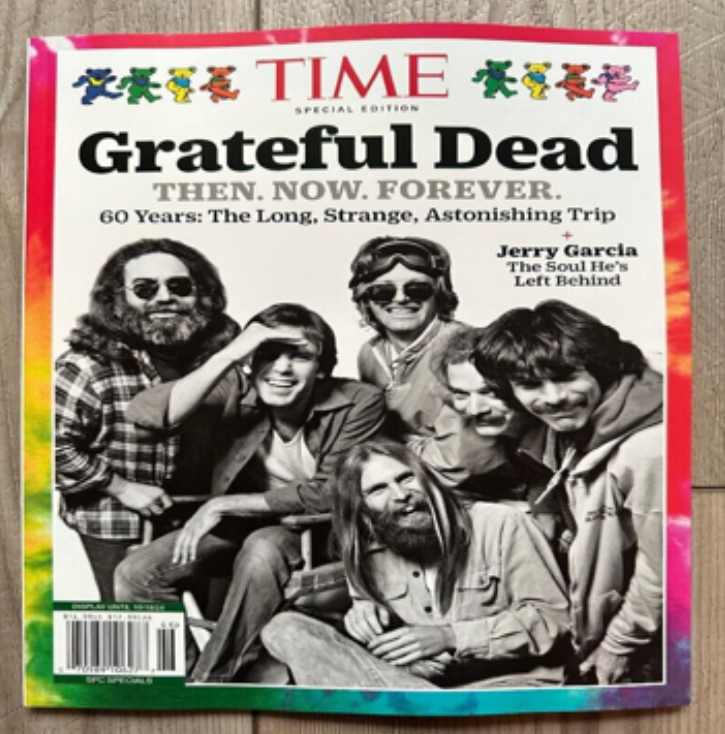
TIME Magazine’s special edition dedicated to The Grateful Dead has ignited a wave of responses from both fans and critics. As one of the most iconic and enduring bands in the history of music, The Grateful Dead has always evoked passionate discussions, and this special edition is no exception. While some readers laud the magazine for its comprehensive celebration of the band’s legacy, others express disappointment, feeling that the content falls short in exploring the more nuanced and lesser-known aspects of The Grateful Dead’s story. This analysis delves into the various elements of the special edition, examining its strengths and shortcomings to provide a balanced critique of its contribution to the ongoing narrative of The Grateful Dead.
The Grateful Dead: A Band Worthy of Tribute
The Grateful Dead is more than just a band; it is a cultural phenomenon that has influenced not only the music industry but also the broader cultural landscape. Known for their improvisational style, eclectic blend of musical genres, and a devoted fan base known as “Deadheads,” the Grateful Dead’s impact is undeniable. Given this profound influence, it is no surprise that TIME Magazine chose to dedicate a special edition to the band. The edition aims to encapsulate the essence of The Grateful Dead, exploring their history, music, and legacy through a collection of articles, interviews, and photos.
For fans, this special edition serves as a nostalgic tribute to a band that has shaped their lives. The magazine’s focus on key moments in the band’s history, such as their formation, their rise to fame, and their evolution over the decades, provides a comprehensive overview that honors their journey. The inclusion of iconic photographs, concert posters, and other memorabilia further enhances the nostalgic appeal, allowing long-time fans to reminisce about the band’s heyday.
Comprehensive Coverage or Surface-Level Overview ?
One of the primary points of contention among readers is whether the special edition offers truly comprehensive coverage of The Grateful Dead or if it merely scratches the surface. On one hand, the magazine does an admirable job of outlining the major milestones in the band’s career. It covers their early days in the San Francisco music scene, their experimental approach to music, and their innovative marketing strategies, such as their groundbreaking use of bootleg recordings to build a loyal fan base.
The special edition also explores the band’s influence on various aspects of popular culture, from their role in the counterculture movement of the 1960s to their impact on the music industry’s approach to live performances and distribution. These topics are essential for understanding the band’s legacy, and TIME Magazine’s coverage ensures that readers gain a broad understanding of The Grateful Dead’s significance.
However, critics argue that while the edition provides a solid introduction to The Grateful Dead’s history, it does not delve deeply enough into the more intricate and lesser-known aspects of the band’s story. For instance, some readers were hoping for more detailed analysis of the band’s musical experimentation, such as their use of innovative sound technology or their influence on the development of genres like jam band music and psychedelia. Others feel that the magazine missed an opportunity to explore the complex dynamics between band members, or to provide fresh insights into the band’s creative process.
Moreover, some fans feel that the magazine could have done more to explore the cultural impact of The Grateful Dead’s dedicated fan base, the Deadheads. While the special edition acknowledges the importance of the Deadheads in sustaining the band’s popularity, critics argue that this unique subculture warrants more in-depth examination. The phenomenon of the Deadheads, with their communal spirit, unique lifestyle, and role in the band’s success, is a fascinating aspect of The Grateful Dead’s legacy that could have been explored in greater detail.
The Nostalgic Appeal
Despite these criticisms, there is no denying the nostalgic appeal of the special edition for fans of The Grateful Dead. The magazine’s collection of photographs, concert posters, and interviews evokes memories of the band’s legendary live performances and the vibrant counterculture scene of the 1960s and 70s. For long-time fans, these visual elements are perhaps the most compelling part of the special edition, serving as a reminder of why The Grateful Dead holds such a special place in their hearts.
The interviews featured in the magazine also contribute to this sense of nostalgia. Conversations with band members, as well as with figures from the music industry who were influenced by The Grateful Dead, provide personal insights into the band’s journey and the impact they had on those around them. These interviews help to humanize the band, offering glimpses into their personalities and the camaraderie that fueled their creativity.
For newer fans or those less familiar with The Grateful Dead, the special edition serves as an accessible entry point into the band’s world. The magazine’s overview of the band’s history and legacy provides a solid foundation for understanding why The Grateful Dead remains such an influential and beloved band, even decades after their formation. The nostalgic tone of the magazine may also inspire newer fans to explore the band’s music and immerse themselves in the cultural phenomenon that is The Grateful Dead.
Balancing Accessibility with Depth
One of the challenges TIME Magazine faced in creating this special edition was balancing the need to make the content accessible to a broad audience while also providing enough depth to satisfy die-hard fans. In many ways, the magazine succeeds in striking this balance. The articles are well-written and engaging, offering a broad overview of The Grateful Dead’s history, influence, and legacy. The inclusion of interviews and photographs adds a personal touch that helps to bring the band’s story to life.
However, the criticism that the special edition lacks depth is not without merit. For readers who are already well-versed in The Grateful Dead’s history, the content may feel somewhat superficial. The magazine touches on many important aspects of the band’s story, but it rarely goes beyond a surface-level exploration of these topics. For a band as complex and multifaceted as The Grateful Dead, there is a wealth of material that could have been explored in greater detail.
TIME Magazine’s special edition on The Grateful Dead is a valuable resource for both fans and newcomers. It offers a comprehensive overview of the band’s history, influence, and legacy, while also providing a nostalgic tribute that long-time fans will appreciate. The magazine’s combination of articles, interviews, and photographs creates an engaging and visually appealing package that captures the essence of The Grateful Dead.
However, the special edition is not without its shortcomings. Critics argue that it could have delved deeper into the more intricate aspects of the band’s story, offering fresh insights and analysis that would have enriched the content. For readers who are already familiar with The Grateful Dead, the magazine may feel more like a well-curated collection of familiar material rather than a groundbreaking exploration of the band’s legacy.
Ultimately, while the special edition may not satisfy every reader’s expectations, it remains a worthwhile addition to the ongoing narrative of The Grateful Dead. It serves as a reminder of why the band continues to be celebrated and revered, even decades after their formation. For those who love The Grateful Dead, this special edition is a fitting tribute to a band that has left an indelible mark on music history.
No comments yet.








